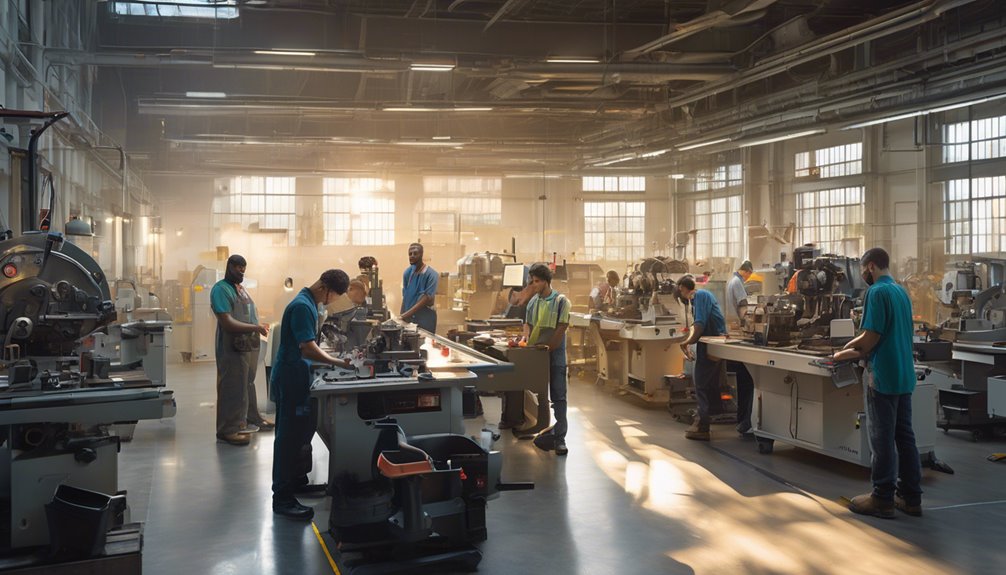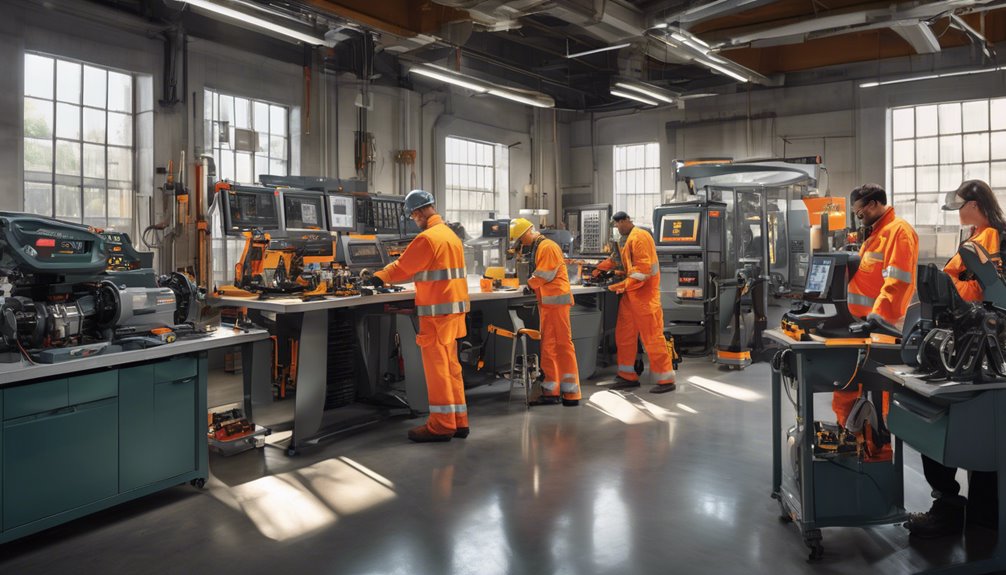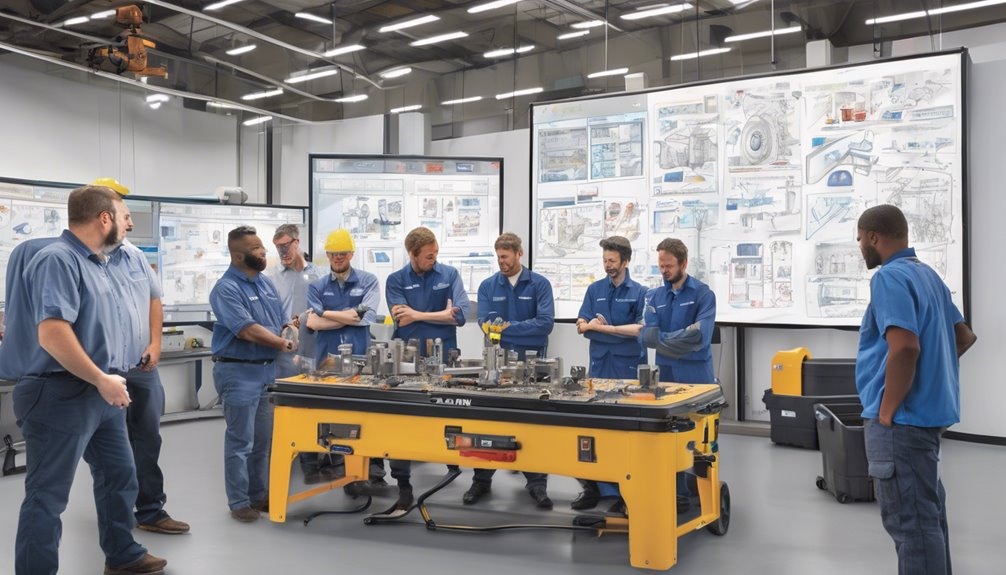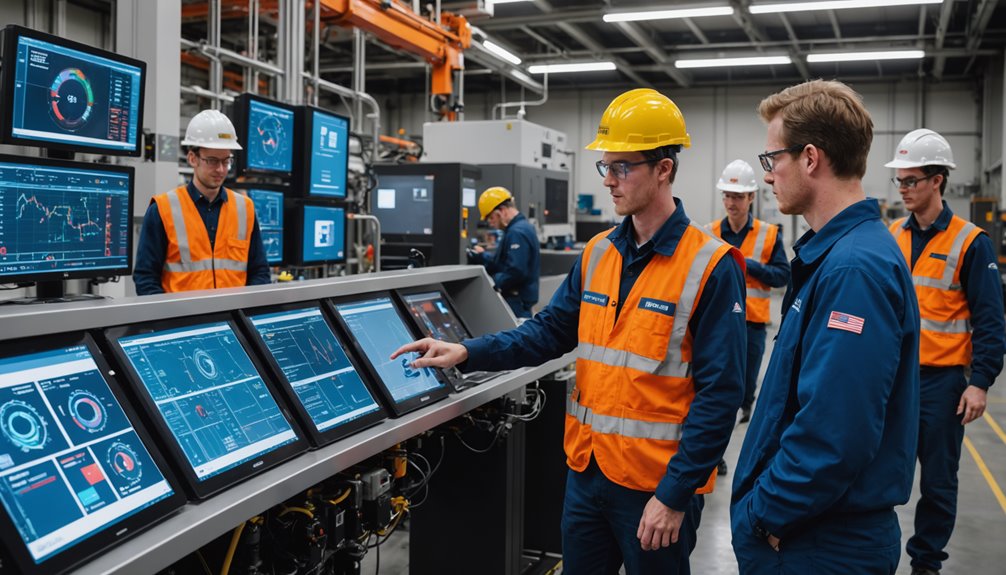Total Productive Maintenance (TPM) Training can transform your approach to equipment management. By focusing on proactive maintenance and collaboration, you'll see improvements in reliability and productivity. You might wonder how this training fosters a culture of continuous improvement and what key components contribute to its success. The benefits are substantial, but understanding the strategies for effective implementation is crucial. Let's explore how you can make TPM a pivotal part of your operations.
Understanding Total Productive Maintenance

Total Productive Maintenance (TPM) is a comprehensive approach that enhances equipment reliability and overall productivity in manufacturing environments.
You'll find that TPM focuses on proactive and preventative maintenance, empowering you and your team to take ownership of equipment performance. By emphasizing collaboration between operators and maintenance personnel, it fosters a culture of continuous improvement.
You'll notice that when everyone participates, equipment downtime decreases, and efficiency increases. Moreover, TPM encourages regular training and skill development, ensuring you're well-equipped to identify and address issues before they escalate.
This holistic method not only boosts productivity but also enhances workplace morale, as you and your colleagues become integral to the maintenance process. Embracing TPM can lead to significant gains in both performance and job satisfaction.
Key Components of TPM Training
Effective TPM training encompasses several key components that ensure you and your team can maximize equipment performance.
First, it's crucial to understand the principles of TPM, including proactive maintenance and employee involvement. Hands-on training helps you gain practical skills in equipment care and troubleshooting. You'll also learn to identify and eliminate waste, fostering a culture of continuous improvement.
Another vital component is the establishment of metrics to track performance and reliability, allowing you to gauge progress effectively. Team collaboration is essential, so incorporating group activities encourages communication and shared responsibility.
Lastly, ongoing support and refresher training keep skills sharp and reinforce the TPM philosophy, ensuring everyone stays aligned with your goals for operational excellence.
Benefits of Implementing TPM

Implementing Total Productive Maintenance (TPM) brings numerous advantages that can significantly enhance your operations.
First, it boosts equipment efficiency by minimizing downtime and reducing breakdowns. You'll see increased productivity as your machines run more smoothly and consistently.
Second, TPM fosters a culture of continuous improvement, encouraging your employees to take ownership of their workspaces and equipment. This leads to higher morale and engagement within your team.
Third, TPM helps you identify and eliminate waste, ultimately reducing costs. You'll also improve product quality, as machines perform reliably, cutting down on defects.
Lastly, by investing in TPM, you create a safer work environment, as regular maintenance can prevent accidents and injuries.
Strategies for Effective TPM Training
To ensure your Total Productive Maintenance (TPM) training is successful, it's crucial to engage employees from the start. Begin by explaining the importance of TPM and how it impacts their daily roles.
Use hands-on training methods, allowing employees to practice skills in real-time. Encourage teamwork by forming cross-functional groups, promoting collaboration and knowledge sharing.
Incorporate visual aids and interactive sessions to keep the training dynamic and memorable. Regularly assess understanding through quizzes or practical demonstrations, providing feedback to reinforce learning.
Lastly, celebrate achievements to foster a positive atmosphere and motivate continuous improvement.
Overcoming Challenges in TPM Implementation

While adopting Total Productive Maintenance (TPM) can significantly boost productivity, many organizations face challenges during implementation. One common hurdle is resistance to change among employees. To tackle this, engage your team early, explaining the benefits of TPM and how it enhances their work environment.
Another challenge is a lack of proper training. Ensure everyone receives adequate TPM training so they understand their roles and responsibilities.
Additionally, inconsistent management support can derail initiatives. You must have strong leadership backing to create a culture that embraces TPM.
Finally, set realistic timelines and remain flexible, as unexpected issues may arise. By addressing these challenges head-on, you'll pave the way for a successful TPM implementation that improves efficiency and reliability.
Measuring Success in TPM Initiatives
After overcoming challenges in TPM implementation, the next step is measuring the success of your initiatives. Start by tracking key performance indicators (KPIs) like equipment effectiveness, downtime, and maintenance costs. These metrics provide a clear picture of how well your TPM strategies are working.
Gather data regularly and analyze trends to identify areas for improvement. Employee engagement is also crucial; assess feedback and participation levels in training and maintenance activities.
Consider conducting audits and benchmarking against industry standards to gauge your progress. Celebrating small wins encourages a culture of continuous improvement.
Conclusion
In conclusion, embracing Total Productive Maintenance training can transform your workplace by enhancing equipment reliability and fostering teamwork. By focusing on proactive maintenance and continuous improvement, you'll not only boost productivity but also create a safer environment for everyone. Remember to measure your success and adapt your strategies as needed to ensure lasting results. With commitment and collaboration, you can achieve a thriving culture of maintenance excellence that benefits both your team and your organization.

